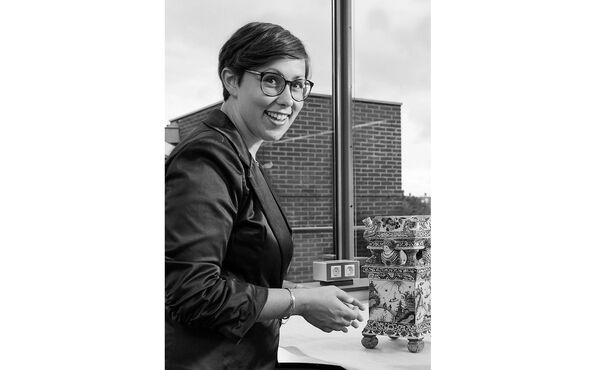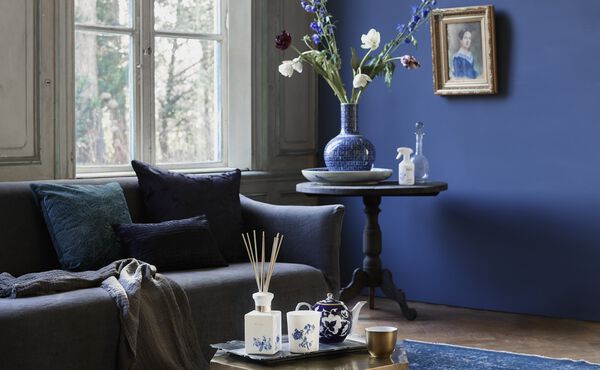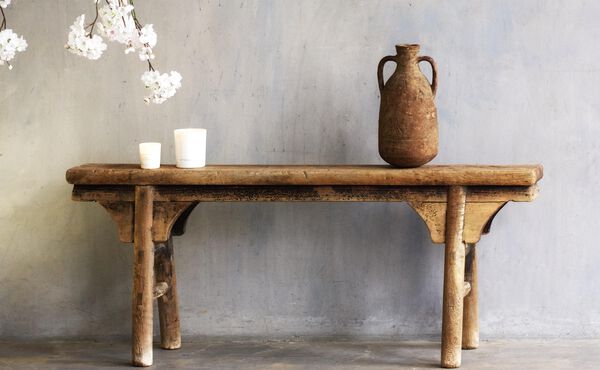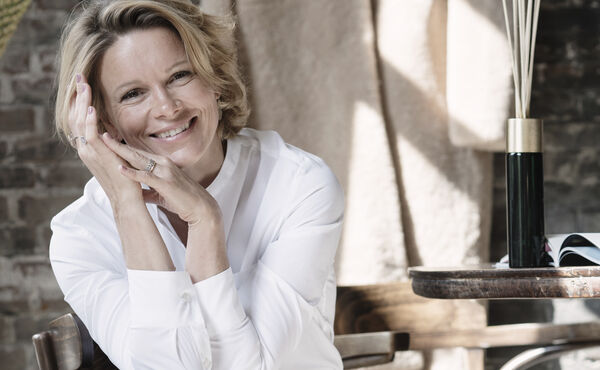Rituals has partnered with the Rijksmuseum to create a new line of luxurious home & body products — the Amsterdam Collection. With an artful design inspired by an iconic blue-and-white pot from the 17th century, the collection pays tribute to a time when East and West encountered each other in prospering Holland.

The pot that inspired the Amsterdam Collection now stands in the Rijksmuseum. But long before it became a museum piece and a muse for our designers, the pot was an exotic eye-catcher in stylish interiors of the past. Femke Diercks, curator at the Rijksmuseum, takes us back to the 17th century to trace its glorious history.
The pot looks like Chinese porcelain. But actually, it’s not—it’s earthenware, and it wasn’t made in Asia but at a pottery in Delft. Basically, it’s a copy. Does that make it any less of a museum-worthy object?
“No, not at all. In fact, it’s what makes it such a special object—the design takes its inspiration from Chinese porcelain, but the technique is typically Dutch. It combines Asian and European influences, a typical feature of Dutch earthenware from this period.”
How did those Asian influences come about?
“For a long time, European potters didn’t know how to make porcelain. Only the Chinese knew the secret to its production. The VOC—the Dutch East India Company—imported porcelain from China, which became instantly popular in The Netherlands. Delft potters quickly started making imitations using their own pottery technique. The factory where the pot was made was called The Porcelain Ashbarrel—the word ‘porcelain’ clearly refers to the material the potters inspired to imitate.
The potters used earthenware covered with a layer of tin glaze. The decorations were clearly inspired by Chinese porcelain, but they were adjusted somewhat to accommodate the local taste—where the Chinese had a taste for simplicity, Europeans often preferred an abundance of ornaments. If you look at the lidded pot that inspired the Amsterdam Collection, you can see that not an inch is left undecorated. It’s a beautiful example of the typical Delft Blue pottery that flourished under the influence of trade relationships with Asia.”
Can you tell us something about the birds and the blossoming florals on stalks portrayed on the pot?
“In addition to smaller birds, you can spot a lot of peacocks on the pot. Peacocks were popular decorative motifs on European ceramics, because they were considered symbols of pride and wealth. The flowers are more difficult to identify, but they’re very similar to the flowers that were commonly painted on Asian porcelain. The Asian flowers give the pot an exotic look, while the pattern of larger and smaller birds and flowers creates that typical sense of richness.”
What was the pot used for?
“These types of lidded pots had a purely decorative function—they were not used for storage or to put flowers in. The pot most likely stood on the mantel or elsewhere in the home of a well-off family, as a way to exhibit style and sophistication. The pot is very tall, it’s almost half a metre high, so it must have been quite valuable. Whoever bought the pot was looking for a real showstopper in their interior.”
The pot now stands in the Rijksmuseum. Is it still a showstopper?
“Absolutely! It’s part of our permanent exhibition of European ceramics. The pot is one of the showpieces of the collection. If you have the chance to visit the Rijksmuseum, you should definitely go see it.”

And a more personal question to conclude: do you have a daily routine?
“I do, actually. My evening routine is nothing elaborate—I apply cream and I comb my hair—but it’s when I let the hassles of the day glide off me. I have a small child at home, so my days can be pretty hectic. I like to use this time to pause and unwind. Similarly, my early-morning bike ride to the Rijksmuseum relaxes and fuels me for the workday ahead.”
The Amsterdam Collection is an exclusive collection of home and body products, created in close collaboration with the Rijksmuseum. Featuring Dutch tulips and Japanese yuzu, the collection pays tribute to the historic connection between East and West. Launched in the summer of 2019, the collection is exclusively available at the Rijksmuseum, Rituals Leidsestraat, www.Rituals.com and www.bijenkorf.nl, Bijenkorf Amsterdam and on board with the Royal Dutch airline KLM.



.jpg?sw=600&sh=370&sm=fit&cx=0&cy=370&cw=3901&ch=2406&sfrm=jpg)
